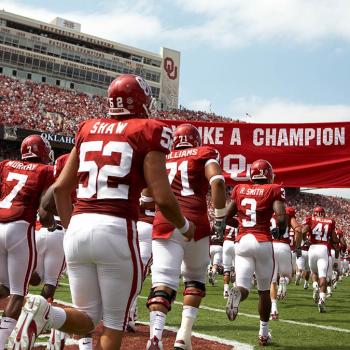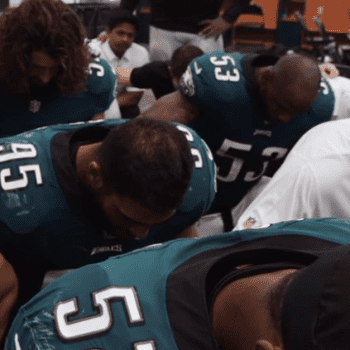Kevin Kelley decided to flip football convention on its head after Pulaski (Ark.) Academy’s second game of the 2007 season.
Never a fan of taking his offense off the field, the coach became miffed when his Bruins punted away to Pine Bluff (Ark.) Dollarway High only to see Pulaski allow an 80-yard touchdown on the return.
“That was stupid,” Kelley said. “We should’ve gone for it.”
As a result, his 2008 team did not punt during 14 games. Such an unorthodox strategy may seem like lunacy, but it was successful: Pulaski won the 5A state title on Dec. 6.
Kelley’s team only punted twice in 2007 − once as an act of sportsmanship to prevent running up the score − and never after that Dollarway game.
Kelley has reasons to go for it.
Keeping the offense on the field on fourth down allows for more creative play-calling. Third-and-long does not have to be a passing down. The Little Rock school can run the ball, throw a screen pass or use any number of formations. Defenses do not know whether to use a nickel or dime defense. And Pulaski’s offense has less pressure on third down.
“We don’t really worry too much about it,” quarterback Spencer Keith said. “We just get as many yards as we can. We don’t have to go for the first down.”
If Pulaski converts on fourth down, it creates a momentum change similar to a turnover. Other high school coaches have told Kelley they would rather see his team punt.
The Bruins even avoid punting when the defense has stopped them inside their own 10-yard line.
“You can just tell people are in the stands thinking, ‘You’re an idiot,’ ” Kelley said.
Kelley supports this rationale with numbers analysis.
If Pulaski has a fourth-and-8 at its own 5-yard line, Kelley said his explosive offense likely will convert a first down at least 50 percent of the time. If it fails to convert, statistical data from the college level shows that an opponent acquiring the ball inside the 10-yard line scores a touchdown 90 percent of the time. If Pulaski punts away (i.e., a 40-yard punt with a 10-yard return) the other team will start with the ball on the 38-yard line and score a touchdown 77 percent of the time. The difference is only 13 percent.
An innovative and statistics-minded coach, Kelley had tinkered with eschewing the punting game since winning his first state championship in 2003. He became further emboldened after reading several studies, including “Do Firms Maximize? Evidence from Pro Football,” by University of California-Berkeley economics professor David Romer. Kelley also examined ZEUS, a computer program developed by Chuck Bower, who has a doctorate in astrophysics, and Frank Frigo, a game theory expert, to model and predict football outcomes.
The Pulaski coach has adopted an unusual approach to kickoffs as well. About 75 percent of the time, he uses an onside kick instead of a standard kickoff. To illustrate why, Kelley again relies on numbers.
If his team does not recover the onside kick, the opponent likely will field the kick around its own 47-yard line. On a typical kickoff, the other team usually starts around the 33-yard line.
“You’re only giving up 14 yards,” Kelley said. “And you get a chance to get the ball.”
Pulaski features seven different kinds of onside kicks, including bunching eight players on one side of the field and three on the other; faking the kick with one kicker while another player shifts over to kick to a vacated spot in coverage; clustering all 11 players before spreading out just as the ball is kicked; bouncing a hard kick off the turf for a jump ball and launching a “helicopter kick” by kicking a ball placed on the ground against the tee. The latter strategy causes the ball to spin like a helicopter’s propeller and move like a curveball.
“Much like the punting situation, [the onside kick] becomes something the other team has to work on a lot during the week,” Kelley said. “That’s taking time from their preparation against your offense or defense. So it all works towards the common goal.”
This probably works better on the high school level than it would on the college or professional level, but who knows? The coach deserves credit for his creativity, courage, and aggressiveness. Are there any other non-football applications for this no-punt strategy? What can we learn from Coach Kelley’s success?












